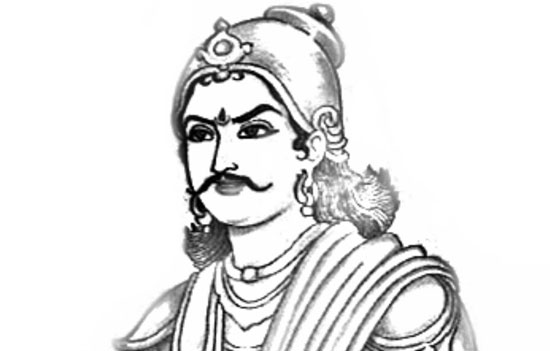History & Significance
A journey through time: exploring the legacy of the Chola dynasty's greatest architectural achievement
The Visionary Founder
Raja Raja Chola I (985-1014 CE)
Raja Raja I (born Arulmozhi Varman) was one of the most powerful kings of the Chola dynasty. During his reign, the Chola Empire expanded tremendously, encompassing most of South India and parts of Sri Lanka and the Maldives.
Beyond being a skilled military commander, Raja Raja I was a patron of arts, architecture, and literature. The Brihadeeswara Temple stands as his greatest architectural legacy, showcasing not only his devotion to Lord Shiva but also his vision to create a monument that would symbolize the might and cultural sophistication of the Chola Empire.
Construction Timeline
The construction of Brihadeeswara Temple began around 1003 CE and was completed by 1010 CE, taking approximately seven years. This was remarkably efficient for a structure of its size and complexity, especially considering the technological limitations of the era.
According to inscriptions, the temple was consecrated in the 25th regnal year of Raja Raja Chola I with an elaborate ceremony. The temple was originally called "Rajarajeswaram" after its founder, though it later became known as Brihadeeswara Temple (the temple of the Great Lord Shiva).

Did You Know?
The temple was built to celebrate Raja Raja's military victories, particularly the successful northern campaigns.
Raja Raja Chola I donated substantial gold and silver to the temple and made arrangements for its maintenance by assigning revenue from several villages.
The king's name "Raja Raja" translates to "King of Kings," reflecting his status as one of the most powerful monarchs of his time.
Historical Timeline
The journey of Brihadeeswara Temple through centuries
1003-1010 CE: Construction Period
Raja Raja Chola I commissioned the temple, and it was built over a seven-year period. The temple was designed and executed by the architect Kunjara Mallan Raja Raja Perunthachchan, as mentioned in inscriptions.
1010 CE: Consecration
The temple was consecrated and officially named "Rajarajeswaram" after its founder. The inauguration was marked by grand ceremonies and rituals, with the king himself participating in the festivities.
13th-17th Century: Various Rulers
After the decline of the Chola Empire, the temple came under the control of various dynasties including the Pandyas, the Delhi Sultanate, the Vijayanagara Empire, and the Madurai Nayaks. Each ruler contributed to the temple's maintenance and added their own architectural elements.
17th-19th Century: Maratha Period
The Marathas ruled Thanjavur from 1674 to 1855. They were great patrons of the temple and made significant contributions to its upkeep and the surrounding infrastructure. The Maratha kings renovated parts of the temple and built the Thanjavur Palace nearby.
1987: UNESCO Recognition
The temple was recognized as a UNESCO World Heritage Site as part of the "Great Living Chola Temples." This international recognition highlighted the temple's outstanding cultural, architectural, and historical significance.
Present Day: Living Heritage
The temple continues to function as an active place of worship, maintaining its ancient rituals and traditions. It remains under the administration of the Tamil Nadu Hindu Religious and Charitable Endowments Department, which oversees its preservation and religious activities.
Today, Brihadeeswara Temple stands not only as a testament to the artistic and architectural genius of the Chola period but also as a living cultural institution that connects modern Indians to their rich heritage.
Cultural Significance
Beyond its architectural splendor, Brihadeeswara Temple holds profound cultural and religious significance.
Religious Importance
As a Shiva temple, Brihadeeswara is a significant pilgrimage site for Shaivites (devotees of Lord Shiva). The main deity is Brihadeeswara (the Great Lord), represented by a large Lingam in the sanctum sanctorum.
The temple also houses shrines to Vishnu, Subrahmanya, Ganesha, Nataraj, and goddess Parvati, making it an important place of worship for followers of various Hindu traditions.
The continuous tradition of worship for over a millennium makes it a "living temple" where ancient rituals and practices are preserved and continued to this day.
Artistic & Historical Value
The temple is a treasure trove of Chola art, with thousands of sculptures and intricate carvings depicting various deities, mythological scenes, and daily life during the Chola period.
The walls of the temple contain numerous inscriptions in Tamil and Grantha scripts, providing valuable historical information about the Chola administration, economy, social structure, and religious practices.
The temple's murals, though partially damaged, are among the rare surviving examples of Chola painting and offer a glimpse into the visual art traditions of medieval South India.
Legacy
Brihadeeswara Temple has influenced temple architecture throughout South India, setting standards for proportion, layout, and sculptural decoration that were emulated in later temples.
The temple represents the zenith of Chola artistic expression and stands as a symbol of Tamil cultural identity and achievement. It continues to inspire artists, architects, and cultural enthusiasts worldwide.
As a UNESCO World Heritage Site, the temple is recognized globally for its "outstanding universal value" and is protected for future generations to appreciate and study.